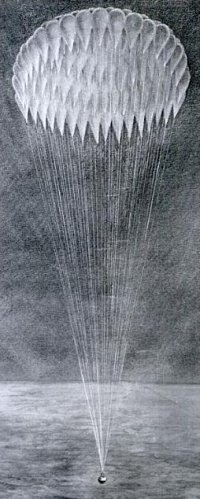 HELIOS (Project)
HELIOS (Project)

HELIOS was the name of an early effort made by the Office of Naval Research (ONR) of the U.S. Navy to establish a manned balloon program.
It's origins can be traced to the PLEIADES project, which was the name of a multi-balloon manned mission carried out in 1937 by Jean Felix Piccard. It was part of an effort to achieve high altitudes years before the inception of polyethylene balloons. In 1945, Piccard along with Otto Winzen who caught his enthusiasm for the stratospheric balloon project, approached the United States Navy with a proposal called PLEIADES II which would use a spherical capsule (similar to the ones used by his twin brother Auguste Piccard in Europe during the FNRS flights) carried to an altitude of 100,000 feet by a cluster of cellophane balloons. The proposal included details about the configuration of the capsule, based in the experience gained during the FNRS missions.
Initially the Navy accepted to study the idea, created a Technical Committee under the leadership of Commander George Hoover and throught the Office of Naval Research (ONR) provided limited funding to pursue the project, which they baptized as HELIOS.
As the cellophane to make the balloons has limitations, Winzen and Piccard started to look for a better material. After testing several ones which included saran, nylon, and Pliofilm, they finally found a suitable material which was developed in Great Britain in 1933, and during the war, it was used as an insulating material in submarines and radar sets: polyethylene.
Because of its proximity to the University of Minnesota, Piccard asked to build the HELIOS capsule to General Mills. Although best known as a manufacturer of flour and cereals, General Mills had a Mechanical Division that produced gun sights and torpedoes for the Navy during the war.
The Helios gondola was a 7-foot, 2-inch diameter sphere with an interior volume of 192 cubic feet made from eight segments of 1/8-inch thick 3003-SO aluminum. The living space allocated inside the capsule for the two men crew was 88 cubic feet, for the scientific instruments was 52 cubic feet, while the onboard equipment occupied 26 cubic feet. This left more or less 26 cubic feet of free space inside.
The HELIOS flight would carry onboard two passengers: a Navy pilot and a scientific observer. The Navy selected Lt. Harris F. Smith as the pilot for the first mission.
Shortly after work started on HELIOS, Winzen went to work for General Mills, and led the team that designed their first plastic balloon. A key invention he made was a heat sealing system that fused the gores of the balloon together along with tape placed over the joints. This provided a suspension system that actually carried the load, so the delicate plastic skin served only as a barrier material for the lifting gas.
The first plastic balloon made at General Mills by Winzen had a volume of 30.000 cubic feet, with a realistic goal of being capable to build balloons upto 200.000 cuft. HELIOS would need a cluster of 70 balloons totaling 14 million cubic feet to reach the desired altitude of 100.000 ft. Trying to launch such a cluster would have been impractical, so the Navy decided to cancel the project. By that time (late 1947), General Mills had already finished the capsule shell, but after the demise of the program it was placed in storage at the Naval Air Station at Lakehurst, New Jersey.
However, the HELIOS effort was not futile and paved the way for the succesful balloon program of the Navy in two differente ways. On one hand, just after HELIOS cancellation, the ONR asked for the continuation of the balloon development effort, which would lead to the SKYHOOK unmanned scientific balloon program. On the other hand, in the summer of 1954, by initiative of Lt. Cmdr. Malcolm D. Ross the HELIOS shell would be reclaimed again by the ONR and after repairs and improvements would be the main piece of hardware used during the STRATOLAB high altitude manned balloon program.

